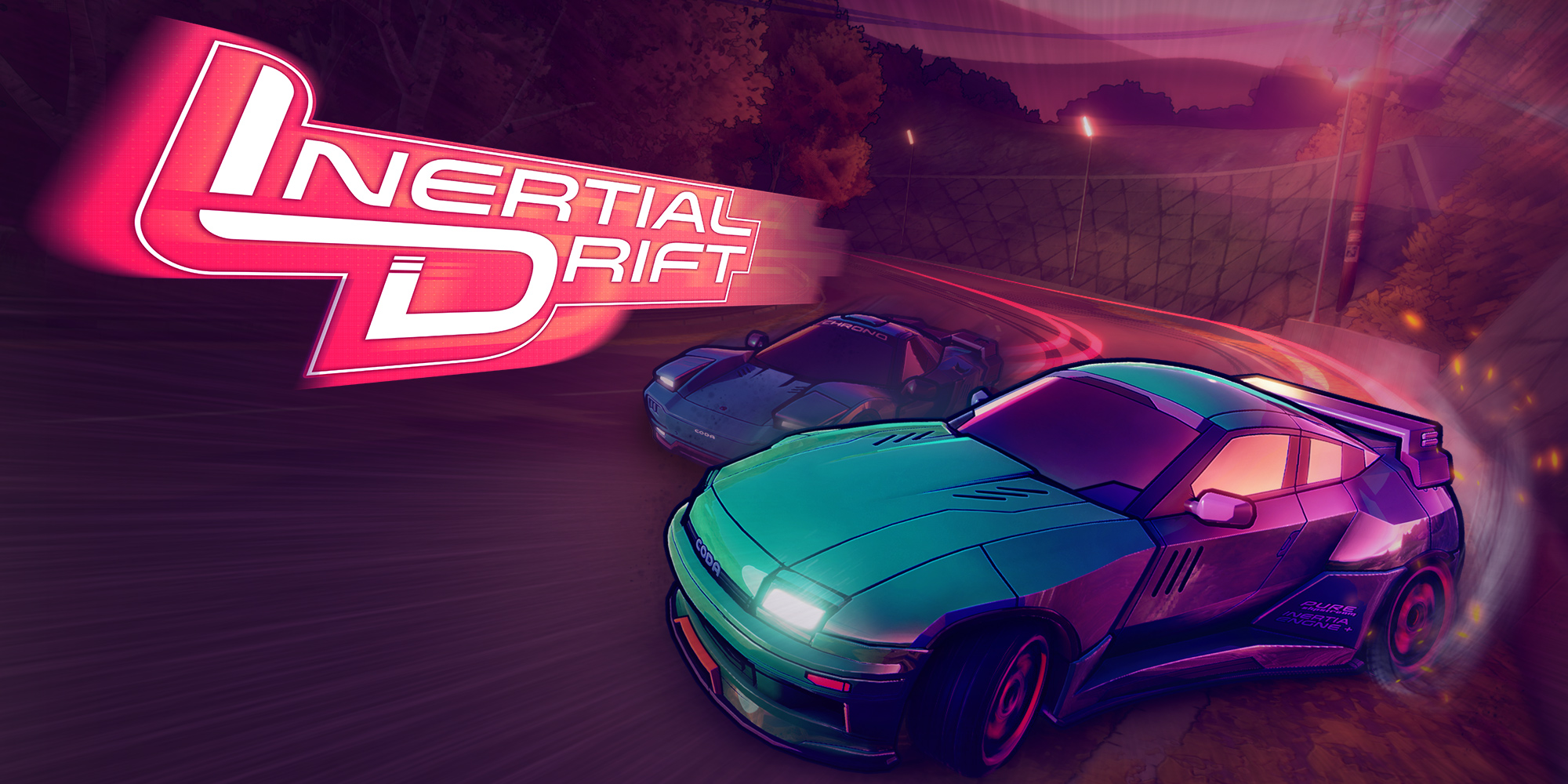[Review]: Inertial Drift – Nintendo Switch
Inertial Drift – Nintendo Switch
Developed By: Level 91 Entertainment
Published By: PQube
Category: Arcade Racer
Release Date: September 11, 2020
The nineties played host to many arcade racing greats such as Sega Rally and Ridge Racer. Both series featured detailed 3D textured cars powersliding through corners while trying to beat your opponents and the timer counting down. These games and their popularity helped define what an arcade racing game should be at the time. So much so that 90s arcade racer has now become a genre on its own. In the absence of new entries in these iconic franchises developers have taken things into their own hands, with Horizon Chase Turbo and Hotshot Racing recent entries in the genre.
Now from Northern Ireland developer Level 91 Entertainment and English publisher PQube comes Inertial Drift, a street racing game set in a near future version of Japan. Drawing inspiration from the real life touge style street racing popularised in Japan, you can race in a range of ways including one on one races, cat and mouse style races and time attack challenges through cityscapes and mountain passes.
When you first boot up the game you’re treated to a gorgeous opening cinematic. It seems that Ridge Racer isn’t the only love of the developers with clear homage being paid here and throughout to Initial D, the Japanese manga and Sega developed arcade games. While the in game visual style is not anime it has a nice hand drawn aesthetic. Cars look like comic book adaptations of real-life counterparts, characters have an interesting cutout look about them and the environments seen at night when the streets are quiet are suitably moody with neon adorning city skyscrapers and nice pastel colours in the mountain passes.
The initial tutorial shows you the ropes of the drifting mechanic, with both analogue sticks used to steer. The left stick steers your car slightly but not enough to get round most corners and the right stick sends the back of the car out and puts your car into a powerslide, so both sticks are needed when cornering. Similar to Mario Kart, once you enter a powerslide you can control the drift. The exaggerated drifting is immensely satisfying, nailing the easy to learn, hard to master mechanics found in some of Inertial Drift’s inspirations.
There are a number of game modes, but story mode is a great introduction to things. You learn the ways of drifting in a nicely drip fed approach, with more advanced techniques revealed to you as you progress. You can choose from one of three friends to play as, each with their own car which equates to easy, medium and hard mode based on each car’s handling, top speed and acceleration. Each character has their own story featuring encounters with a diverse range of secondary characters which is played out in cutscenes in between races and with midrace dialogue. The midrace dialogue however is in on screen text boxes which will be missed by most players who are too engrossed in beating their opponent.
While merit is deserved for the story mode idea, the execution lacks a bit of polish in places. Characters deliver dialogue which reads like something from an educational teen drama with characters who are all overly supportive and humble when you are beating them during races or following their defeat. It’s unsurprising then that many of the characters look like they feel awkward during these scenes. But aside from the story itself, story mode is well structured with each track providing a practice mode and multiple types of events to complete which help you through repetition to learn the twists and turns of each track of which there are two types: circular and point to point.
Events in story mode for each track can include ghost, time attack, race, duel and style modes which you need to complete to unlock the next track and its events. Ghost and time attack are very similar and race is one on one. Duel is a cat and mouse type race which can be won by speeding far enough ahead of your competitor to win on points or by crossing the finish line first. Style mode takes its cues from the Kudos system in Dreamcast classic Metropolis Street Racer, where you are awarded points for daring driving, such as drifting round corners without bumping into the sides and driving at speed close to walls.
As you progress through story mode in Inertial Drift you unlock new challenges to complete in challenge mode. Completing challenges in challenge mode unlocks new cars which you can use in arcade, grand prix and local and online multiplayer modes. Arcade lets you choose from the events found in story mode for each track, but there is also a new mode called endurance which is a traditional arcade mode with a timer counting down and a series of checkpoints which you must reach to keep racing. Grand Prix is like the story mode without the story, but you get to race events using any of the cars unlocked in Challenge mode. Local multiplayer lets you play in any of the modes found in story mode whereas online multiplayer only provides one on one race mode. After each event you’re dumped back in the menu so a tournament type mode for both multiplayer modes would have been good.
Not being able to race against more than one other opponent in one player and multiplayer modes feels like something missing. Coupled to that is the Phase Shift Prevention System, Inertial Drift’s explanation for why there’s no collision between cars. Both are staples which add to the frustration and elation in racing and it feels like an experiment here which hasn’t come off. In multiplayer ghost battle offsets the occasional emptiness felt throughout as both players are facing off against two other drivers, but there is no way in any of the modes to switch on collisions.
Further elements that are felt by their absence include split times to see how good your time is compared to the previous lap. In ghost mode and time attack modes which push you to improve your best times is where this is most felt, particularly on some of the longer tracks. Also some of the time attack and ghost mode challenges can require multiple attempts to beat, so a map showing you the track would help be a helpful feature as it often can be difficult to make out upcoming corners.
Inertial Drift aims to evoke memories of arcade racing greats from the 90s and it does so with its own reimagining of these classics. The twin stick steering is easy to learn and a lot of fun, but also provides a challenge on some of the tougher tracks and tougher cars. However it lacks some quality of life improvements that have been made standard since then. While it is to be commended for sticking to its source inspiration of Japanese one on one street racing, not being able to race against multiple opponents at once, and with no collisions, feels like a misstep. A podium finish is deserved but it needs to address some of these issues to reach the top.
3.5/5





Buy Inertial Drift
Be sure to follow PQube

Also, be sure to follow Level 91 Entertainment









